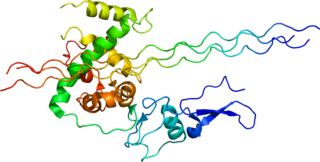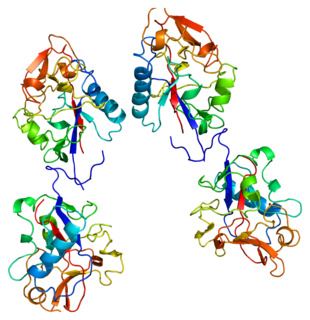 W
WA collagen hybridizing peptide (CHP) is a synthetic peptide sequence with typically 6 to 10 repeating units of the Gly-Xaa-Yaa amino acid triplet, which mimics the hallmark sequence of natural collagens. A CHP peptide usually possesses a high content of Proline and Hydroxyproline in the Xaa and Yaa positions, which confers it a strong propensity to form the collagen’s unique triple helix conformation. In the single-stranded (monomeric) status, the peptide can recognize denatured collagen strands in tissues by forming a hybridized triple helix with the collagen strands. This occurs via the triple helical chain assembly and inter-chain hydrogen bonding, in a manner similar to primers binding to melted DNA strands during PCR. The binding does not depend on a specific sequence or epitope on collagen, enabling CHPs to target denatured collagen chains of different types.
 W
WCollagen is a protein that is an important part of connective tissues in the body. It is a rigid, non-soluble and fibrous protein that adds up to one third of the proteins found in the human body. Collagen is mostly made up of molecules that are packed together to form long and thin fibrils that support each other and ensure the skin is strong and elastic. There are various types of collagen which have individual roles and structures. Most collagen belongs to types 1, 2 and 3. Collagen consists mainly of amino acids and can be mostly found in tendons, muscles, bones, skin, ligaments and other fibrous tissues. It helps keep the skin strong and supple, and sustains the renewal of skin cells and replacement of damaged and dead body cells. The collagen tissues support the formation of bones, tendons, and cartilage that form depending on the level of mineralization. However, an individual can lose collagen components in the body due to exposure to ultraviolet light, tobacco, excessive intake of sugar, and aging. This loss of collagen can cause the skin to lose elasticity, reduction of the thickness of the epidermis, increase in the formation of wrinkles and sagging, and also make the skin vulnerable and easily damaged.
 W
WCollagen alpha-2(XI) chain is a protein that in humans is encoded by the COL11A2 gene.
 W
WCollagen alpha-2(I) chain is a protein that in humans is encoded by the COL1A2 gene.
 W
WType III Collagen is a homotrimer, or a protein composed of three identical peptide chains (monomers), each called an alpha 1 chain of type III collagen. Formally, the monomers are called collagen type III, alpha-1 chain and in humans are encoded by the COL3A1 gene. Type III collagen is one of the fibrillar collagens whose proteins have a long, inflexible, triple-helical domain.
 W
WCollagen alpha-2(IV) chain is a protein that in humans is encoded by the COL4A2 gene.
 W
WCollagen alpha-3(IV) chain is a protein that in humans is encoded by the COL4A3 gene.
 W
WCollagen alpha-4(IV) chain is a protein that in humans is encoded by the COL4A4 gene.
 W
WCollagen alpha-5(IV) chain is a protein that in humans is encoded by the COL4A5 gene.
 W
WCollagen alpha-6(IV) chain is a protein that in humans is encoded by the COL4A6 gene.
 W
WCollagen alpha-1(IX) chain is a protein that in humans is encoded by the COL9A1 gene.
 W
WCollagen alpha-2(IX) chain is a protein that in humans is encoded by the COL9A2 gene.
 W
WCollagen alpha-3(IX) chain is a protein that in humans is encoded by the COL9A3 gene.
 W
WCollagen alpha-1(V) chain is a protein that in humans is encoded by the COL5A1 gene.
 W
WCollagen alpha-2(V) chain is a protein that in humans is encoded by the COL5A2 gene.
 W
WCollagen alpha-3(V) chain is a protein that in humans is encoded by the COL5A3 gene.
 W
WCollagen alpha-2(VI) chain is a protein that in humans is encoded by the COL6A2 gene.
 W
WCollagen alpha-3(VI) chain is a protein that in humans is encoded by the COL6A3 gene. This protein is an alpha chain of type VI collagen that aids in microfibril formation. As part of type VI collagen, this protein has been implicated in Bethlem myopathy, Ullrich congenital muscular dystrophy (UCMD), and other diseases related to muscle and connective tissue.
 W
WCollagen alpha-5(VI) chain also known as von Willebrand factor A domain-containing protein 4 is a protein that in humans is encoded by the COL6A5 gene.
 W
WCollagen alpha-1(VII) chain is a protein that in humans is encoded by the COL7A1 gene.
 W
WCollagen alpha-2(VIII) chain is a protein that in humans is encoded by the COL8A2 gene. Mutations of the gene are linked to posterior polymorphous dystrophy type 2.
 W
WCollagen alpha-1(XII) chain is a protein that in humans is encoded by the COL12A1 gene.
 W
WCollagen alpha-1(XIV) chain is a protein that in humans is encoded by the COL14A1 gene. It likely plays a role in collagen binding and cell-cell adhesion.
 W
WCollagen alpha-1(XIX) chain is a protein that in humans is encoded by the COL19A1 gene.
 W
WCollagen alpha-1(XV) chain is a protein that in humans is encoded by the COL15A1 gene.
 W
WCollagen alpha-1(XVI) chain is a protein that in humans is encoded by the COL16A1 gene.
 W
WCollagen XVII, previously called BP180, is a transmembrane protein which plays a critical role in maintaining the linkage between the intracellular and the extracellular structural elements involved in epidermal adhesion, identified by Diaz and colleagues in 1990.
 W
WCollagen alpha-1(XVIII) chain is a protein that in humans is encoded by the COL18A1 gene.
 W
WCollagen alpha-1(XXI) chain is a protein that in humans is encoded by the COL21A1 gene. The protein is an extracellular matrix component of blood vessel walls, secreted by smooth-muscle cells. The protein may contribute to the extracellular matrix assembly of the vascular network during blood vessel formation.
 W
WCOL22A1 is a human gene encoding for collagen. The associated protein is thought to contribute to the stabilization of myotendinous junctions and strengthen skeletal muscle attachments during muscle contraction.
 W
WCollagen α-1 (XXIII) chain is a protein encoded by COL23A1 gene, which is located on chromosome 5q35 in humans, and on chromosome 11B1+2 in mice. The location of this gene was discovered by genomic sequence analysis.
 W
WCollagen alpha-1 (XXVII) chain (COL27A1) is a protein that in humans is encoded by the COL27A1 gene.
 W
WCollagen, type XXVIII, alpha 1 also known as COL28A1 is a protein that in humans is encoded by the COL28A1 gene. This protein belongs to a class of collagens that contain von Willebrand factor type A domains. The protein is encoded by the COL28A1 gene which contains 45 exons and is found of the p arm of chromosome 7.
 W
WEndostatin is a naturally occurring, 20-kDa C-terminal fragment derived from type XVIII collagen. It is reported to serve as an anti-angiogenic agent, similar to angiostatin and thrombospondin.
 W
WProlargin is a protein that in humans is encoded by the PRELP gene.